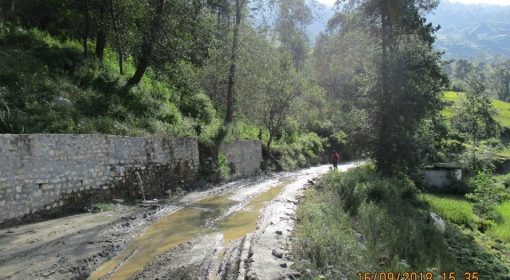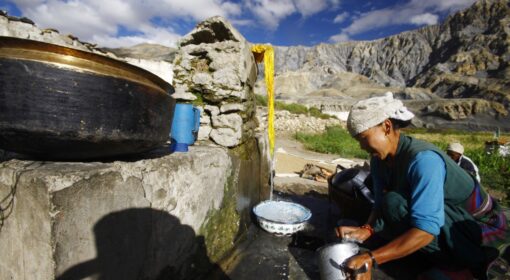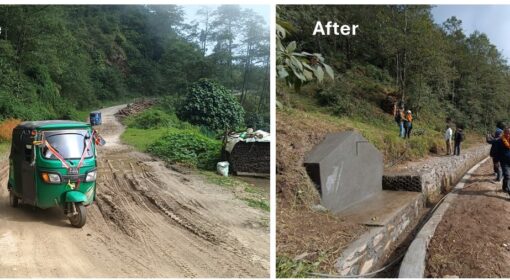by Anastasia Deligianni, Saroj Yakami, and Frank van Steenbergen
November 05, 2020
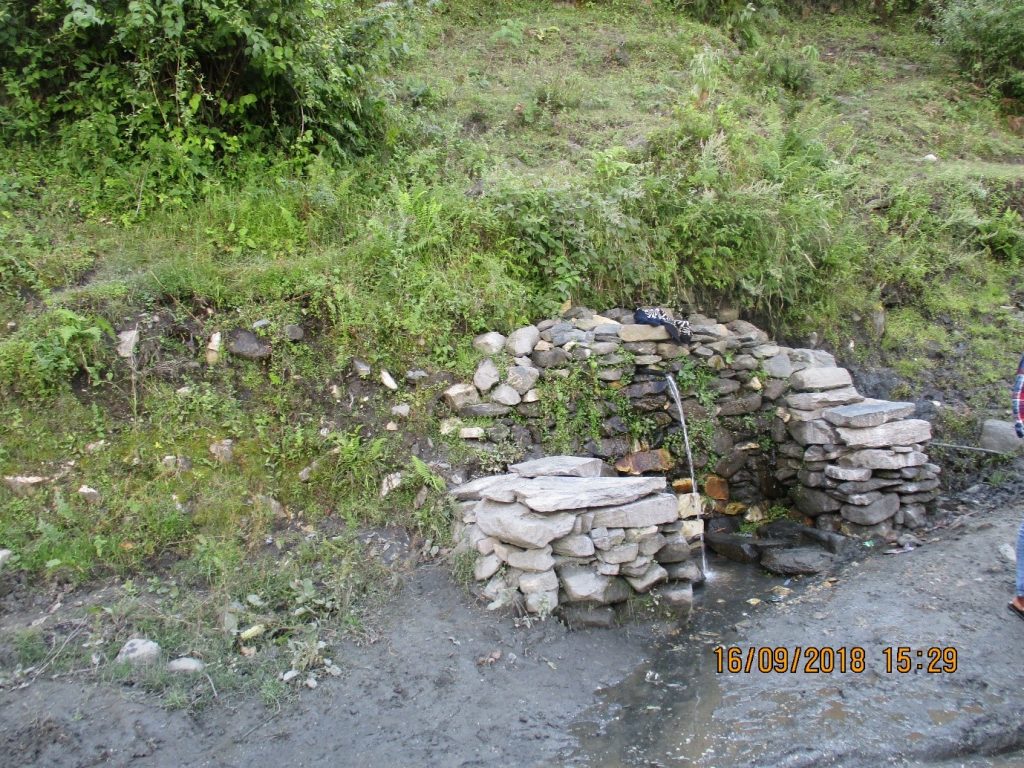
It is a major concern that springs in the Himalayan middle and high mountain areas are drying up. As most of the mountain population depends on springs for domestic water supply and local agriculture, this is a life and death matter. Here are some estimates, all alarming. In the Indian Himalayas there are an estimated 5 million springs: 50% of these are drying (Pandey, 2018). The lean period of many springs is increasing and discharge is decreasing. From Nepal the evidence is more anecdotal but not less worrying. In one district in the mid-hill areas (Kavrepalanchok) for instance 30% of the springs dried up (Sharma et al., 2016). Water scarcity is forcing mid-hills communities to abandon their homes.
In spite of the fact that they sustain a population of millions of people little is known on the springs: where they are, how they behave over the year and how they are recharged. Similarly, there is limited knowledge on what is driving the demise of springs. Several options are offered: changes in rainfall pattern (rain bursts instead of moderate rainfall), changes in land use, erosion, neglect of traditional ponds (that helped to recharge the springs), demographic changes, and with it increased water consumption (Aayog, N. I. T. I., 2018).
Yet, there may be another major factor that is not well recognized nor understood causing the demise of the mountain springs: the rapid expansion of the road network in the middle and high mountains. The intensive and often uncontrolled construction of roads in the mountain areas is opening up mountain aquifers and is causing ‘a drying by thousand cuts’. Either by the removal of unconsolidated material or the cutting of rock formations, road development exposes the water bearing strata and make them ‘bleed’. Wild springs and seeps develop, that if not controlled will empty the small aquifer systems. These road-induced perches affect the sustainability of the existing fragile water supply systems and may explain the decline of springs in several areas.
In turn, these leaks are also an important source of road damage. They may affect the road surface directly by destabilizing or by creating depressions on the roads that grow during the monsoon and cause uncontrolled and erosive run-off from road bodies. Therefore, the management of roadside mountain springs is a double must: safeguarding the quality of road infrastructure and ensuring water supply for both domestic and agricultural uses in mountain regions.
There should be a systematic connection between road development and spring protection. A first step is developing a systematic understanding of the presence of valuable mountain aquifers, and incorporating it in road building. This can be done on the basis of local community knowledge and by careful observations of vegetation, mountain formations and the presence of existing springs and seeps. In road construction in sensitive areas one may give preference to the work with manual labour rather over excavators, so as the preserve the springs. A second step is to capture the springs and seeps, to seal them with stone lining where possible, to capture and guide them with proper systems including underneath road drainage systems, and finally to convert them into productive water sources. The latter requires the development of small reservoirs and tapping points, preferably away from the road traffic.
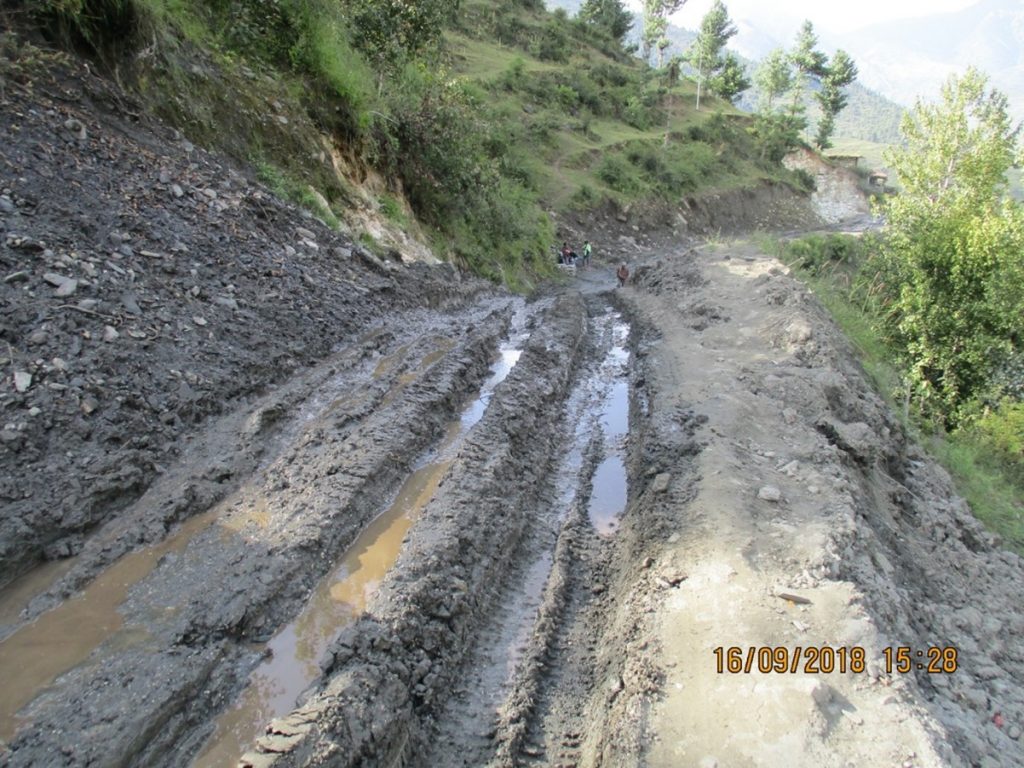
There is no institutional in Nepal set-up to protect and maintain springs. This should be a priority. for starters, it is for communities and households to take care of the upkeep and cleanliness of springs and seeps. Usually, everyone can collect water from a spring. However, during periods of water scarcity, rules on who can or cannot collect water, how much water can be collected, and times when water can be collected may be introduced. In some springs it may be possible to even close the spring by putting a tap on the outlet pipe. A second priority is to Improve recharge of the existing springs, as is being done now in some important pilot programs. This involves identifying recharge areas of springs through community observations and through scientific methods, such as percolation pits, half-moons, contour trenches, deep recharge pits and planting suitable native species. As mountain geology goes, these recharge areas may be located at a large distance from the springs themselves. Based on such treatment techniques, plans can be made to augment recharge by diverting streams and better retaining rain and runoff.
See the video below for similar challenges in Ethiopia:
It is against this backdrop that we are preparing guidelines for good management of spring water sources during road construction and maintenance in hilly and mountainous areas of Nepal. The guideline will be developed in collaboration with the Department of Local Infrastructure (DoLI) and some local municipalities. The main objective of this guideline is to support technical officers and engineers on how to better manage the spring water sources to ensure access to water for remote communities, as will as minimize road damage.
Initiated by
References
- Aayog, N. I. T. I. (2018). Report of Working Group I Inventory and Revival of Springs in the Himalayas for Water Security.
- Pandey, K. (2018). Crisis in the Himalayas: Nearly 50% perennial springs in the region have dried up. Retrieved 18 January 2021, from https://twitter.com/hashtag/Antibioticresistance
- Sharma, B., Nepal, S., Gyawali, D., Pokharel, G. S., Wahid, S., Mukherji, A., … & Shrestha, A. B. (2016). Springs, storage towers, and water conservation in the midhills of Nepal. ICIMOD Working Paper, (2016/3).

